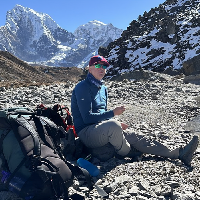Area: 147,181 sq. km
Location: Situated in South Asia bordering China in the north and surrounded by India in the south, east, and west.
Capital: Kathmandu
Population: 29.69 million
People: Nepal has more than 125 ethnic groups and 123 spoken languages.
Language: Nepali is the national language of Nepal. English is widely spoken in the capital, major cities and tourist areas.
Religion: Nepal is a secular state with a predominance of Hindu and Buddhist population.
Nepal Standard Time: 5:45 ahead of GMT
International Dialing Code: +977
Climate: Nepal's climate varies with its topography. Nepal has four major climatic seasons namely Winter (December-February), Spring (March-May), Summer (June-August) and Autumn (September-November). Monsoons are from June to August.
Bio-Diversity: Nepal is one of the richest countries in the world in terms of bio-diversity due to its unique geographical position and latitudinal variation. Nepal occupying only 0.1% of the total landmass of the earth is home to:-
- 2% of all the flowering plants in the world
- 8% of the world's population of birds (more than 848 species)
- 4% of mammals on earth
- 11 of the world's 15 families of butterflies (more than 500 species)
- 600 indigenous plant families
- 319 species of exotic orchids
World Heritage Sites:
There are eight cultural and two natural UNESCO World Heritage Sites in Nepal. The World Cultural Heritage Sites of Nepal are Kathmandu Durbar Square, Patan Durbar Square, and Bhaktapur Durbar Square, Pashupatinath, Changu Narayan, Swayambhunath, Bouddhanath and Lumbini. Similarly, the World Natural Heritage Sites are Chitwan and Sagarmatha National Parks.
Nepal's Unique Treasures:
- Mt. Everest – The highest peak of the world
- Lumbini – The birthplace of Lord Buddha
- Kumari – The Living Goddess














